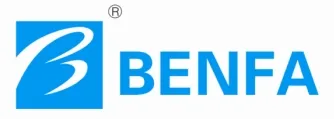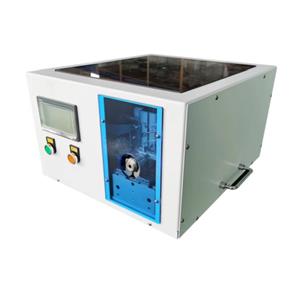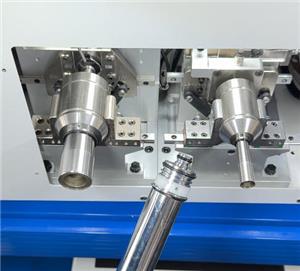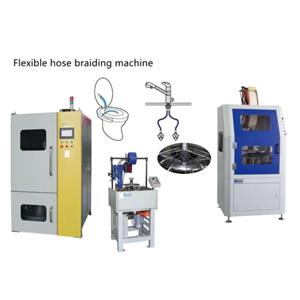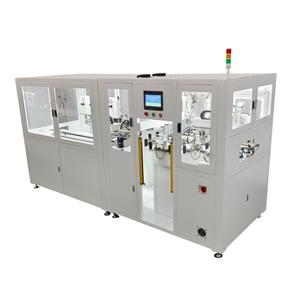High-Performance Braided Hoses — Strength, Flexibility, and Innovation in Every Strand
Introduction
In modern manufacturing, where efficiency and reliability are essential, the demand for high-quality braided hoses continues to grow rapidly. These small yet vital components are used across industries to transport fluids and gases under pressure, ensuring safety, performance, and durability in a wide variety of applications. From household plumbing systems to complex hydraulic installations, braided hoses play a critical role in maintaining operational stability.
Behind each perfectly manufactured braided hose lies advanced machinery and precise engineering — most notably, the hose braiding machine. By combining robust materials with cutting-edge production technology, braided hoses have evolved into one of the most dependable and versatile components in the industrial and domestic sectors.
This article explores the technology, performance advantages, and market value of braided hoses, emphasizing how innovation in braiding machinery and materials science continues to redefine global hose manufacturing standards.
The Role of Braided Hoses in Modern Industry
Braided hoses are engineered to handle the challenges of pressure, temperature, and movement. Their primary function is to ensure a leak-proof, flexible, and durable conduit for fluids and gases. The braided exterior — typically made from stainless steel, copper, or synthetic fibers — reinforces the inner hose, protecting it from bursting, expansion, or mechanical damage.
Today, braided hoses are used in a variety of applications:
Domestic systems, such as kitchen faucets, washing machines, and shower connections.
Automotive systems, including brake lines, fuel delivery systems, and cooling circuits.
Industrial processes, such as hydraulic machinery, chemical transportation, and high-pressure air systems.
Aerospace and defense, where flexible yet durable hoses are critical for safety and performance.
The versatility of braided hoses has made them an integral part of both household and industrial infrastructure, valued for their balance between flexibility and strength.
Materials and Construction
A braided hose consists of several layers, each designed for a specific purpose:
Inner Tube:
Usually made of rubber, PVC, or PTFE, this layer carries the fluid. The material must resist corrosion, pressure, and temperature variations.Reinforcement Layer:
The signature braided structure is typically composed of stainless steel wire or synthetic fiber. The braiding pattern determines the hose’s strength, flexibility, and ability to withstand internal and external stress.Outer Protection Layer (optional):
In some cases, a transparent PVC or rubber coating is added to protect the braid from wear, chemical exposure, or environmental conditions.
The hose braiding machine plays a central role in constructing the reinforcement layer. Its precise control of wire tension, braiding angle, and rotational speed ensures consistent quality, making each hose uniform and reliable.
Advantages of Braided Hoses
1. High Pressure Resistance
The interwoven braiding pattern provides excellent structural strength, allowing the hose to handle high internal pressure without expansion or rupture.
2. Flexibility and Movement
Unlike rigid pipes, braided hoses can bend, twist, and move with machinery or plumbing systems. This flexibility prevents mechanical stress and extends the service life of the system.
3. Thermal Stability
With materials like stainless steel and PTFE, braided hoses can operate under a wide range of temperatures, making them ideal for both hot water systems and extreme industrial environments.
4. Corrosion and Chemical Resistance
The outer braiding and inner liner resist corrosion from chemicals, moisture, and environmental exposure, ensuring reliability in chemical processing, automotive, and marine industries.
5. Leak-Proof Connections
High-precision fittings and consistent braiding tension prevent leaks and maintain pressure integrity, crucial for safety and efficiency in industrial applications.
Precision Manufacturing with Hose Braiding Machines
The performance of every braided hose depends largely on how it is manufactured. Modern hose braiding machines are designed to produce precise, uniform, and high-quality braiding at high speeds.
Key Features of Advanced Hose Braiding Technology:
Automated Control Systems: Digital panels enable operators to control wire tension, braiding angles, and rotation speed with accuracy.
Consistent Tension Control: Ensures uniform wire distribution for smooth and durable hose surfaces.
High-Speed Operation: Capable of continuous production with minimal vibration or noise.
Adaptability: Compatible with multiple wire materials, from stainless steel to nylon fiber.
Energy Efficiency: Optimized power consumption reduces production costs and environmental impact.
By integrating automation and precision mechanics, these machines guarantee that each braided hose meets international safety and quality standards.
Quality Assurance and Testing
Manufacturing excellence doesn’t end with production. Every braided hose undergoes rigorous quality inspection and testing before being delivered to customers. The main tests include:
Burst Pressure Test: Ensures that the hose can withstand pressures significantly higher than its rated working limit.
Leakage Test: Confirms that fittings and braiding integrity maintain complete sealing under pressure.
Bending and Flexibility Test: Measures resistance to fatigue caused by repeated bending and movement.
Corrosion and Aging Test: Simulates harsh environments to assess long-term durability.
These quality control measures ensure that every braided hose not only performs as expected but exceeds industry requirements for safety and reliability.
Applications in Key Industries
Domestic Applications
In homes, braided hoses are most commonly used in water supply systems, faucets, and sanitary installations. Their flexibility and neat appearance make them easy to install and maintain, while their pressure resistance ensures safety and durability.
Automotive Applications
In automotive systems, braided hoses are critical for fuel lines, brake systems, and cooling circuits. The reinforcement provides both protection and reliability, ensuring that essential systems perform under high pressure and temperature variations.
Industrial and Hydraulic Systems
For factories, construction equipment, and heavy machinery, braided hoses deliver fluids at high pressure with consistent flow and minimal risk of failure. Their durability under stress makes them ideal for demanding hydraulic environments.
Chemical and Food Industries
In sectors where purity and chemical resistance are vital, braided hoses with PTFE or stainless steel linings are used for conveying liquids and gases safely without contamination.
Aerospace and Defense
In aircraft and defense equipment, every component must meet extreme performance standards. Braided hoses used here are often customized to withstand high pressure, vibration, and temperature variations in flight environments.
Technological Advancements and Future Trends
The future of braided hose production lies in automation, intelligence, and sustainability.
Smart Manufacturing Integration
Modern hose braiding systems are now equipped with sensors and data collection tools that allow real-time monitoring of production parameters. Predictive maintenance powered by AI ensures minimal downtime and continuous optimization.
Eco-Friendly Materials
As global industries move toward sustainability, more manufacturers are developing recyclable materials and eco-friendly coatings for braided hoses.
Customization on Demand
Different industries require hoses with specific dimensions, materials, and fittings. Advanced manufacturing enables flexible customization, allowing rapid adjustments in production lines without sacrificing efficiency.
Digital Quality Traceability
Every hose produced can be digitally tagged with production data — including materials, testing results, and specifications — ensuring full transparency and traceability from factory to end-user.
Global Market Outlook
The global braided hose market continues to expand as industries prioritize safety, performance, and environmental compliance. Demand is particularly strong in:
Asia-Pacific: Driven by infrastructure growth and industrial development.
Europe: Focused on sustainable and energy-efficient manufacturing.
North America: Emphasizing high-performance materials and advanced automation.
With increased global competition, manufacturers adopting advanced hose braiding technologies gain a significant advantage. Automation reduces costs, ensures consistency, and enables faster adaptation to changing market demands.
Benefits for Manufacturers and End Users
For Manufacturers:
Improved production efficiency and consistency.
Reduced waste and downtime.
Higher profit margins through quality differentiation.
For End Users:
Longer service life and lower maintenance costs.
Enhanced safety and reliability in operation.
Greater confidence in system performance.
The relationship between machine precision and hose quality is direct — the more advanced the hose braiding process, the more durable and dependable the final product.
Conclusion
The braided hose is more than a simple connector — it is a product of engineering precision, material science, and innovation. Each hose embodies the progress of modern manufacturing, combining flexibility, strength, and resilience in one seamless design.
As industries evolve toward smarter and greener production systems, the importance of high-performance braided hoses continues to grow. With advanced hose braiding machines ensuring precision, and continuous improvements in materials and quality control, braided hoses will remain essential components in homes, vehicles, factories, and beyond.
Their versatility, efficiency, and reliability represent the perfect balance between tradition and technology — a symbol of progress in the modern industrial world.
